Ever wanted to get an authentic taste of Thailand?
Well then, I’ve got the tour for you!
I was recently invited on a tour with Taste of Thailand Food Tours (AD—But as always, you receive my honest thoughts, opinions and ramblings) and, for obvious reasons, I was incredibly excited by it.
When people mention Thailand, food is often one of the first things that spring to mind. It’s completely cliche to say that the country is a huge mixing pot of flavours, but it’s an overused phrase for a reason: it’s true.
To get a taste of Thailand is to experience each of the flavours unique to the country: the sweet, the fragrant, the umami—and the spicy(!) and living in Bangkok means I get to experience so many of them in a short distance.
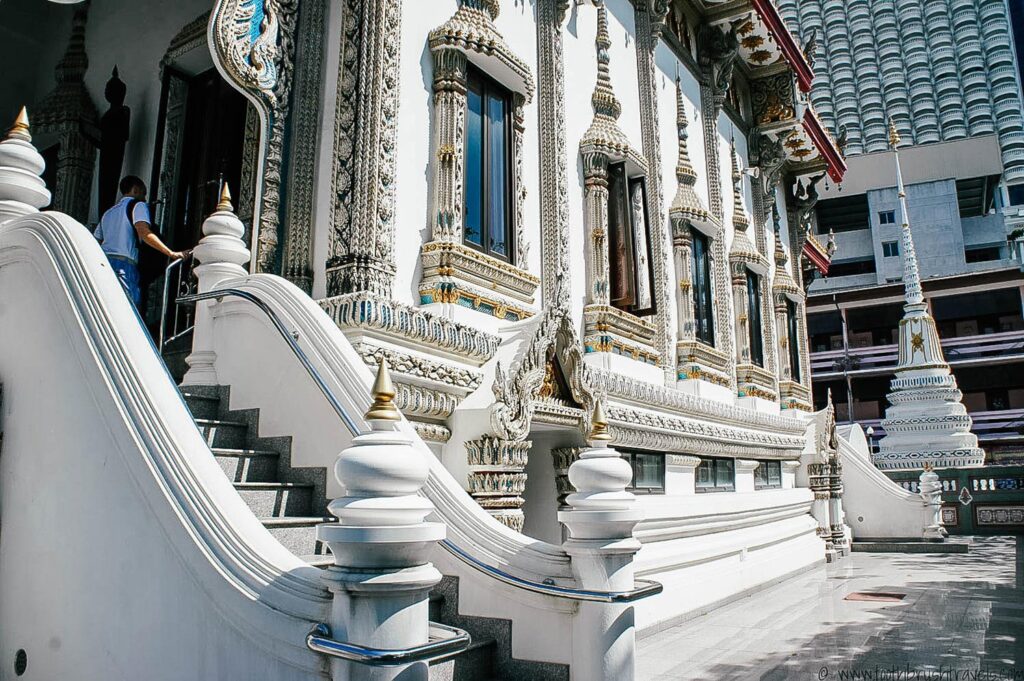
Bangkok is filled with almost every kind of food imaginable—and not just in restaurants. Whether you fancy ice cream, fruit, grilled meat, soup, pastry, pudding, noodles or rice dishes—the streets of Bangkok have it all. But sometimes having so many options can be overwhelming.
I moved to Bangkok in March, and for a month or so restaurants were the only place I would eat. I found the idea of ordering street food to be nerve-wracking, not only because of all the (unwarranted) horror stories of food poisoning that people had told me about but because I didn’t speak much Thai.
Walking back home from food shopping one day, my nose caught the scent of the most tantalising aroma. It smelt spicy, fragrant and I couldn’t resist. It took a while to locate the source of the smell, but when I did, I pointed to one of the boxes and rushed home to dig in. Fresh noodle spring rolls with a chilli and ginger dipping sauce. The rolls themselves were average, but the sauce was something else. My tongue was tingly, my taste buds had come to life, and after that, I knew that the time I had spent solely hiding in restaurants had been a mistake.
But while street food is usually amazing, not every taste of Thailand will be the same—and not all places will be to your taste preferences. Like that one time, I played street food roulette and ordered a red tomato-based curry thinking it was a variation of Tom Yum… But it actually turned out to be Ka Nom Jeen Nam-Ngeaw (pork rib soup with congealed hog blood). Ordering street food is daunting enough, but when you aren’t sure where to go, it can reach a whole new level of overwhelm.
But food tours are a great way to break through that fear. They offer an introduction to local cuisine and are great not only for tourists here for a few days but for expats who want to sample different flavours. So when Taste of Thailand food tours invited me along for the day, I was more than happy to oblige!
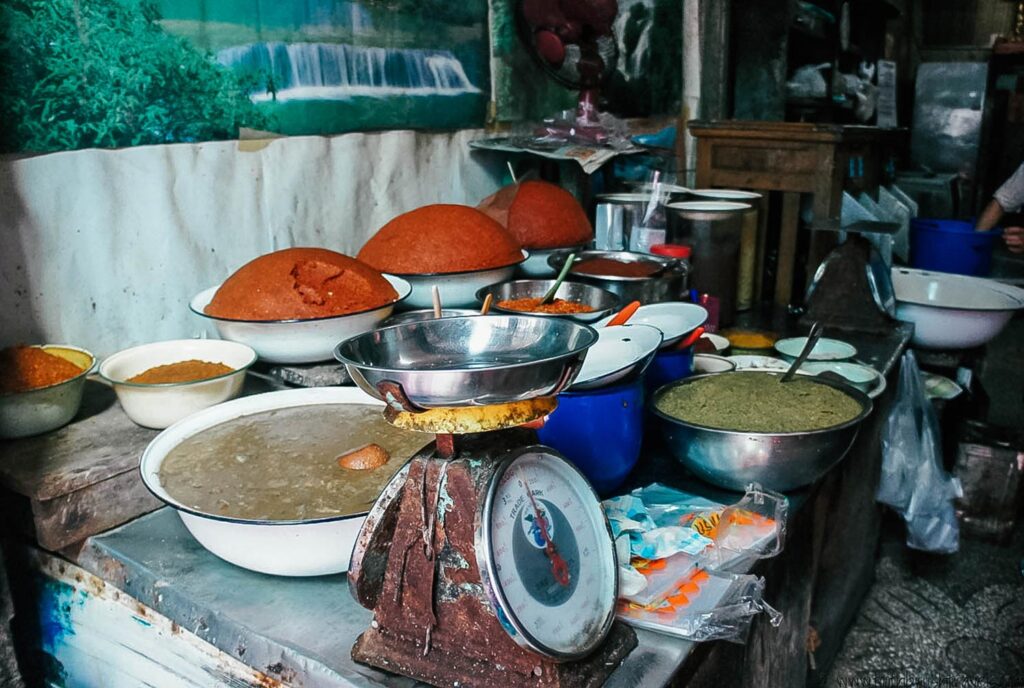
Taste Of Thailand food tour is a 4-hour walking tour that takes you through the parts of Bangkok that you wouldn’t normally stumble across if you were visiting.
The tour began at 10 am and I met the owner Jacob, and our tour guide Pu, at Saphan Taksin BTS station (Central Pier if you’re coming via the Chao Phraya river).
Introductions were made and Pu began the tour by telling us a little about the history of this part of the city, and as she went into the details, you could almost see the enthusiasm running through her veins. She lit up as she shared part of her culture with us, and it made me feel both welcomed and privileged to be there to witness it. Pu’s energy was contagious, and within minutes everyone was relaxed, laughing and ready to eat!
Today’s taste of Thailand took place around the “Village of Love”, otherwise known as Bang Rak, and our first stop was a street food stand just outside of the BTS.
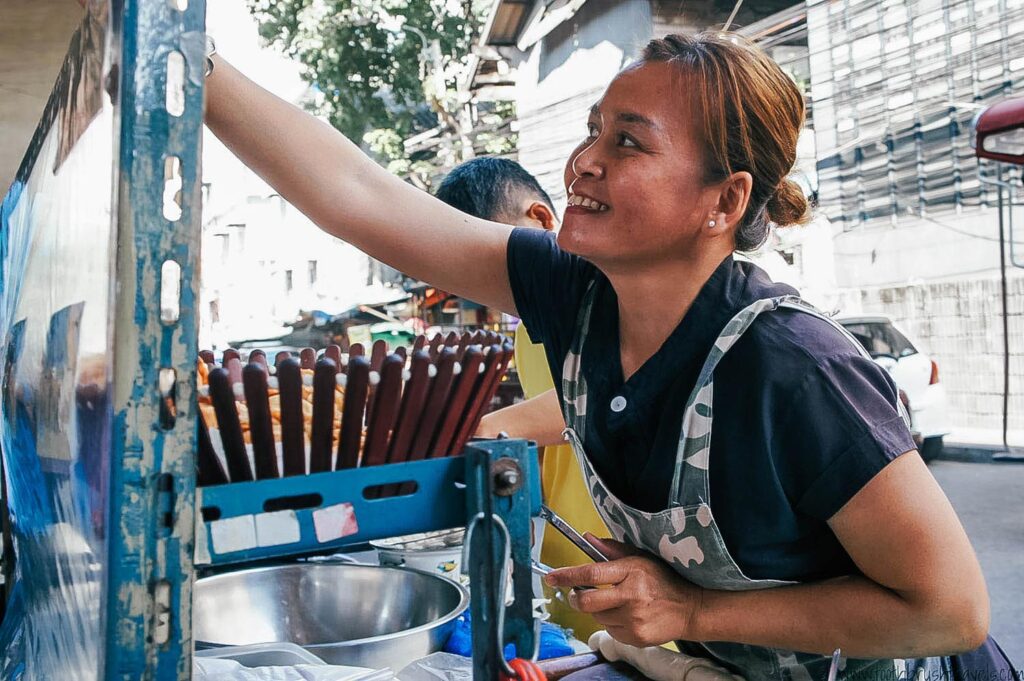
Hand-rolled pastries filled with a variety of curried options, such as; Mung bean, mushroom, taro, vegetable, potato, and black sesame, are tossed into boiling oil for a quick deep fry.
I chose potato and vegetable. The vegetables were crisp against flaky pastry but for me, the real winner was the potato. Smooth with the sharpest of curries that left a sweet and spicy flavour that had me craving more. Not my typical breakfast, but one I would be more than happy to try again!
Then it was on to our next stop, a handmade curry shop in Charoen Alley.
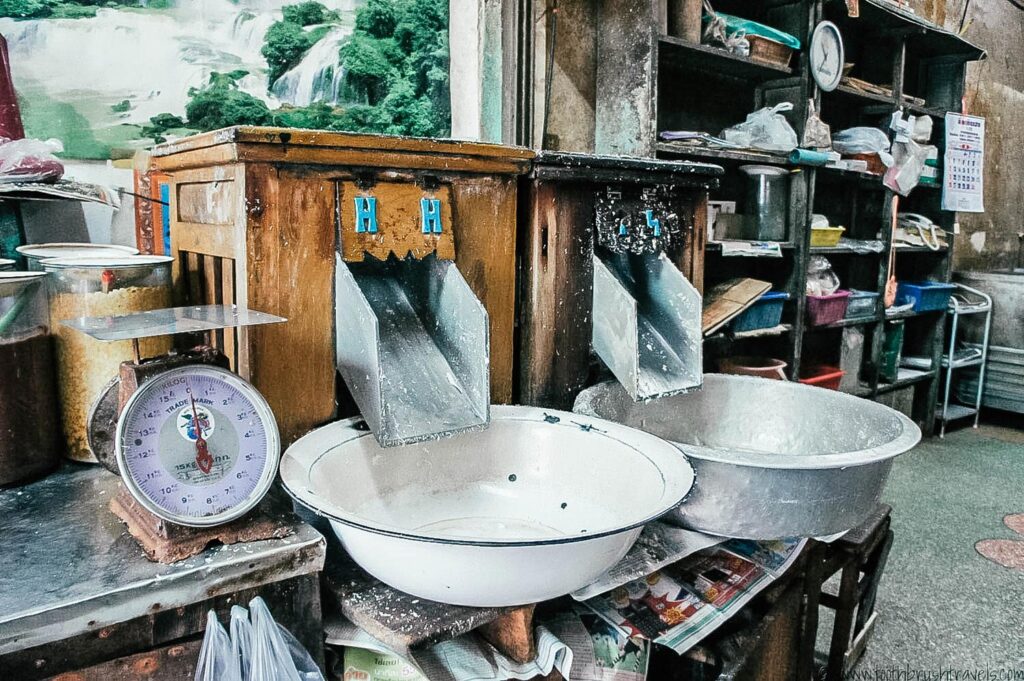
Whether your Thail curry preference is green, red, or yellow—you name it, they make it! Each curry paste is handmade, with the only machine in the store being used to desiccate coconut.
Street vendors and restaurants alike arrive early each morning to get their hands on the popular paste, so if you’d like to buy some make sure you go well before noon—as they’re usually sold out by then!
Our next stop was a wet market.
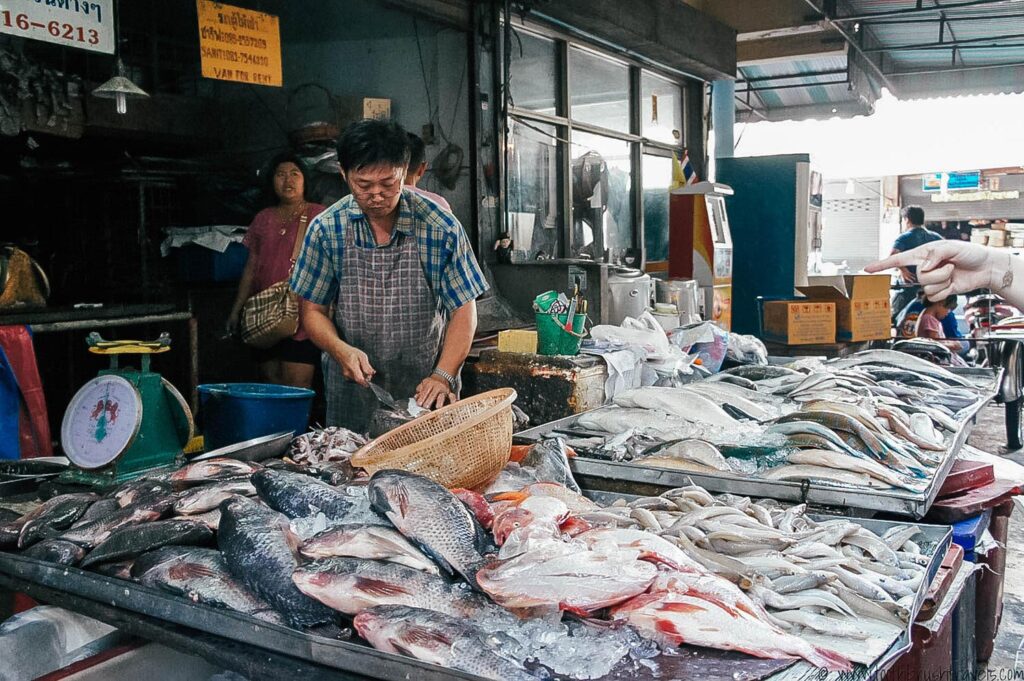
With a combination of butchers and greengrocers, this wet market has it all. Fruit, vegetables, fish, meat and fresh herbs, and it’s available to all… If you can make it out of bed! The market is open early to ensure the ingredients are at their freshest. So if you’re looking to shop, the earlier the better!
On our next stop, we got to sample a taste of Thailand, with fresh fruit from a local market.

This fruit stand is owned by a local woman and has almost every Thai fruit you can imagine. It’s fresh, fragrant and priced by the kilo, it’s affordable—and the thing I love most is that she lets you try before you buy.
We stopped here for a while Pu explained each fruit to us, telling us some of the histories behind each, such as Durian and Mangosteen being the King and Queen of Thai fruits. We tried an array of fruits, but mangosteen and rambutan are by far my favourites. Possibly because they’re the sweetest and sugar is my favourite food group. But who can be sure?

Our next stop after this was to an old part of town. Out of respect, I didn’t take any photos, but as you walked through the back streets you could see an area untouched by time. Wooden houses with shutters, clothes hung on wires that join from house to house, local hairdressers and even a man chilling watching TV in his pyjamas.
It was like travelling back in time before everything turned into high-rise apartment blocks. It felt almost a little naughty to be walking through this part of town, like I was intruding somehow, but the smiles and Sawadeeka’s from the locals ensured me it was ok, and it was lovely to see a place that hadn’t lost its authenticity or become completely commercialised.
After walking through the old town, we stopped at Nam Khom Wa Tow, a local Chinese store on the Charoen Krung Road for a drink.
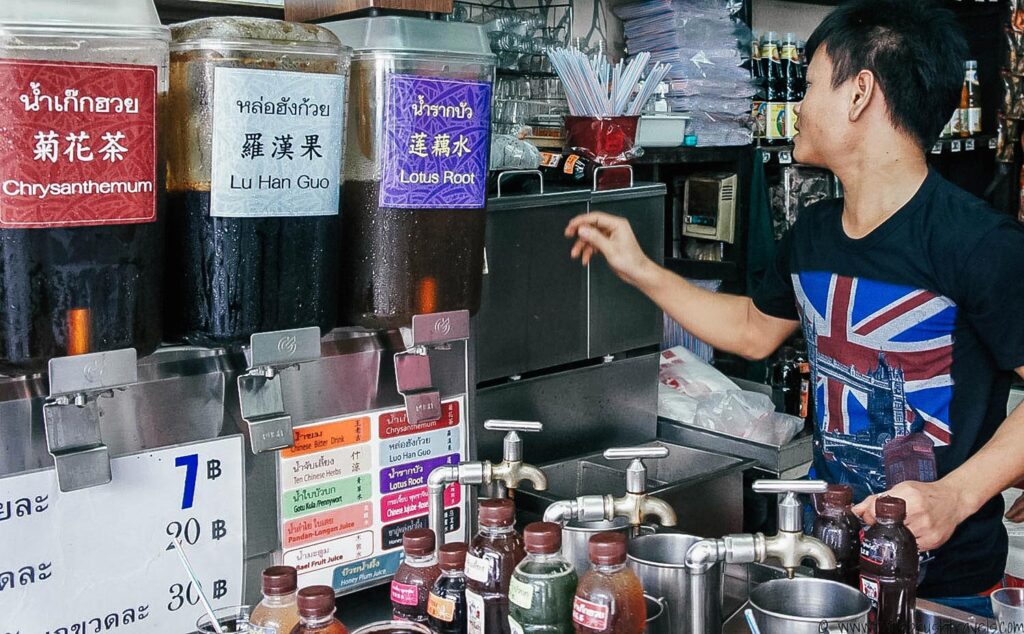
The shop has passed through the family for 70 years. Herbs, sauces and dried-out meats line rows of shelves, and the aroma is a mixture of spice and tea. This store is also the place that created the internationally known healthy boy brand! Whilst here, we were all welcome to try a drink and were handed a menu that outlined the medicinal qualities behind each beverage. I opted for Roselle juice, which is supposed to help with weight loss, throat /sinuses, and immune system and is designed to be refreshing… However, I will never know if the benefits work as I couldn’t get past the second mouthful as the flavour from the other ingredients, was too strong for my palette.
Our next stop was a local street restaurant on the Charoen Krung Road and Si Wiang Intersection.
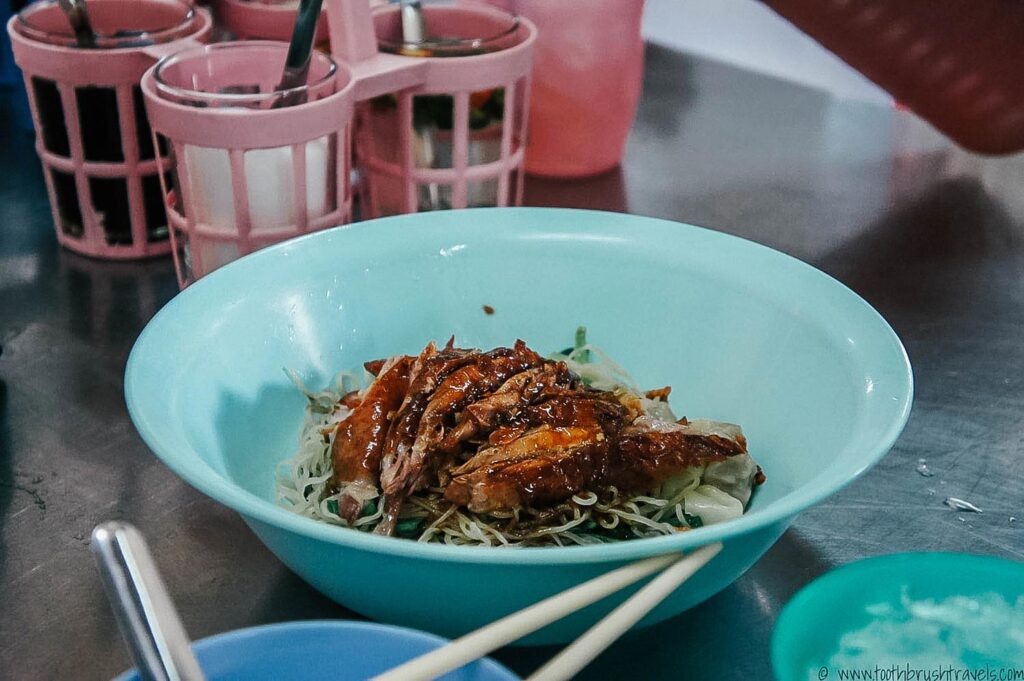
We stopped here for their famous duck. Not really known amongst tourists, but a hit with the locals, this Chinese-style roasted duck is a supremacy in the neighbourhood. The duck is stuffed with herbs before being marinated in Cantonese flavours, then slowly roasted until the skin turns a dark mahogany colour. I’m used to eating meat medium, so when the duck came out brown I was a little worried that the meat would be tough. However, that was far from the truth, the duck was so succulent, tender and flavourful that you could see why the seasonings on the tables were barely touched! (Psst – want to know a secret? This restaurant supplies their cooked duck to many of the high-end hotels in the area.)
After the duck, it was time for something sweet: fried banana.

This stand is extremely popular with the locals in this area—with many standing in line for minutes, to get their fill of fried goodness. Bananas are sliced fresh, rolled in sesame seeds then deep-fried until they reach crispy perfection. If I’m honest, no matter how many I try, I’m not a huge fried banana fan, but you can see why so many love it as the texture is spot on, crispy outside, soft but slightly chewy inners. Hardly healthy but has a lovely texture combination.
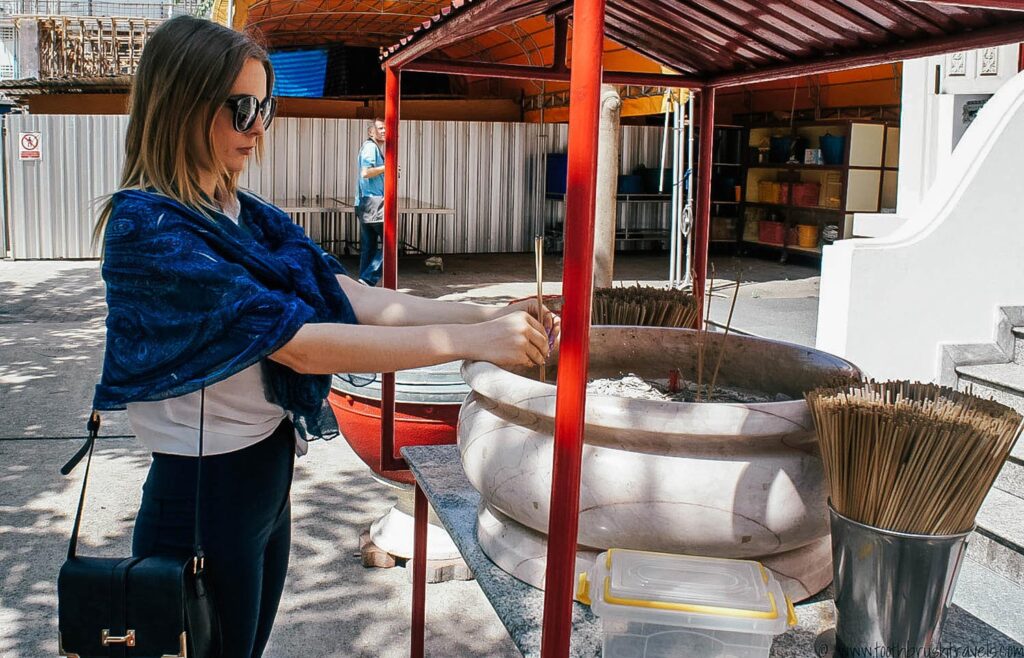
After the pudding, we walked to a small temple. The temple was closed. However, due to the close partnership between Pu, Jacob and the local community, we were granted access to have a look around. It was amazing to be somewhere so quiet and serene without anybody else in sight. The temple is made from teak and the gorgeous details outside continued inside.

Then it was time for some more pudding!

Boonsap Thai Desserts is a shop with a long history. Using recipes that were founded before world war II, this newly renovated restaurant (which started as a humble street stall) has earnt itself quite the name. However, the transformation from a stall to an air-conditioned cafe has only changed the appearance—not the practices. Tatcha Boonpaisarn, the third generation owner, still follows the same methods and guidance of her Grandmother Boonsap by ensuring that each dessert is made in small batches, by hand and uses only carefully sourced ingredients. My favourite was the sticky rice topped with smooth egg custard, but the kanom foy tong (duck yolk dessert) was also delicious.
After stocking up on desserts we took a stroll a bit further out and ended up in what was possibly my new favourite Thai restaurant: Baan Som Tam.
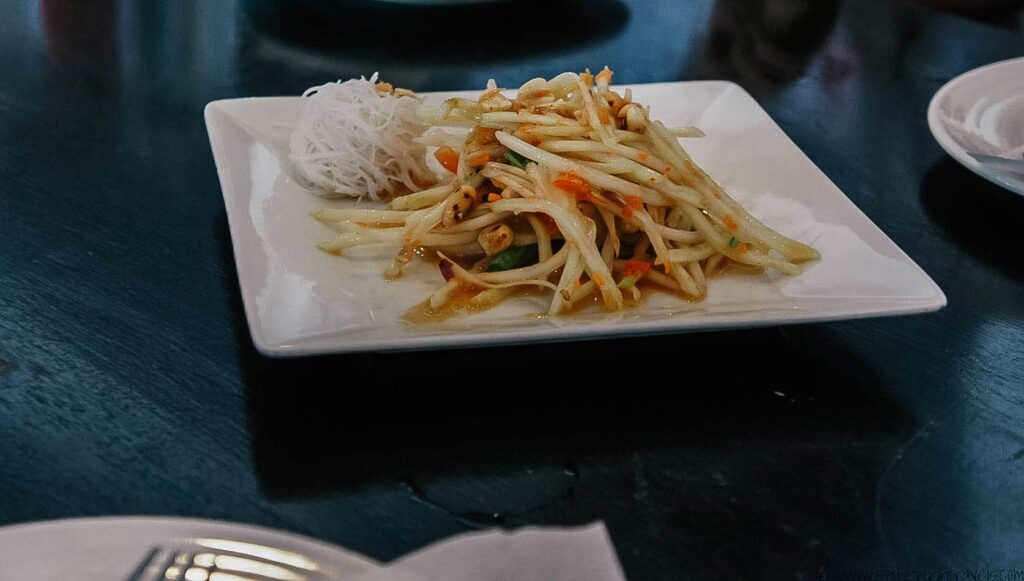
Situated on 9/1 Si Wiang in Sathorn, this restaurant is tucked away along the edge of the road. From its outside appearance of large glass windows and black tables and chairs, it doesn’t strike you as a traditional Thai place, but don’t let that fool you. The focus point of the restaurant is the kitchen situated on the middle edge of the room and depending on your seating position, you get to watch as the spices are ground and the food is prepared.
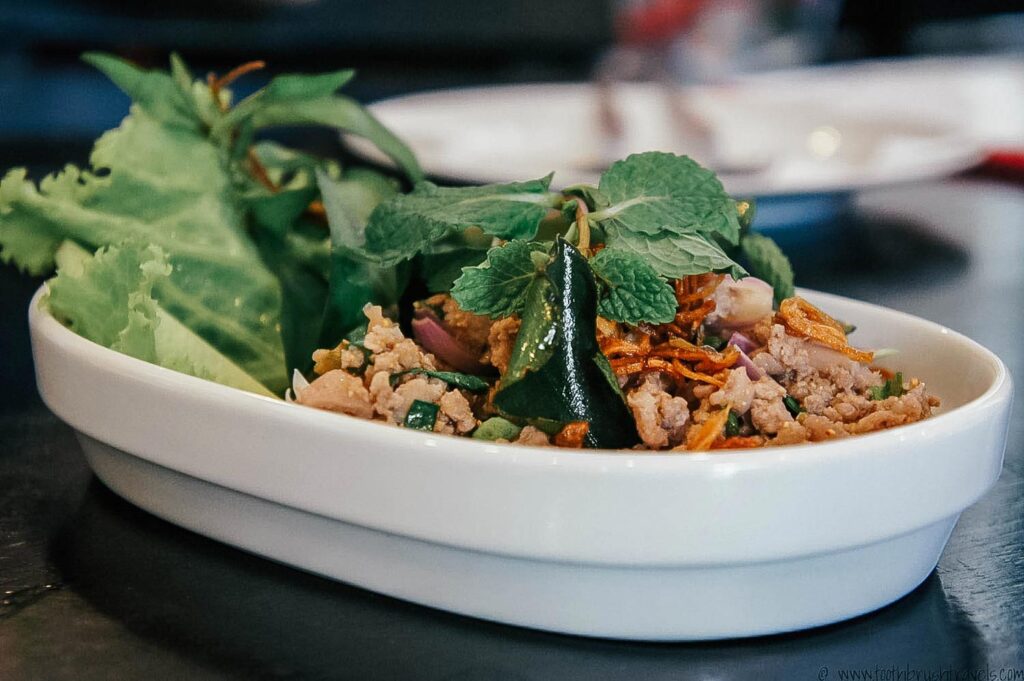

All of the chefs are from Isan, and the flavours are an intricate combination of sweet, sour and salty that stay true to taste. The restaurant offers 26 different variations of Som Tm, however, my absolute favourite was the traditional and the deep-fried papaya. Which is oh-so naughty, but not at all greasy. There also do other Thai food, including larb moo and larb ped, which were pretty damn tasty too!
Our final stop was for some Royal Thai cuisine at Than Ying.
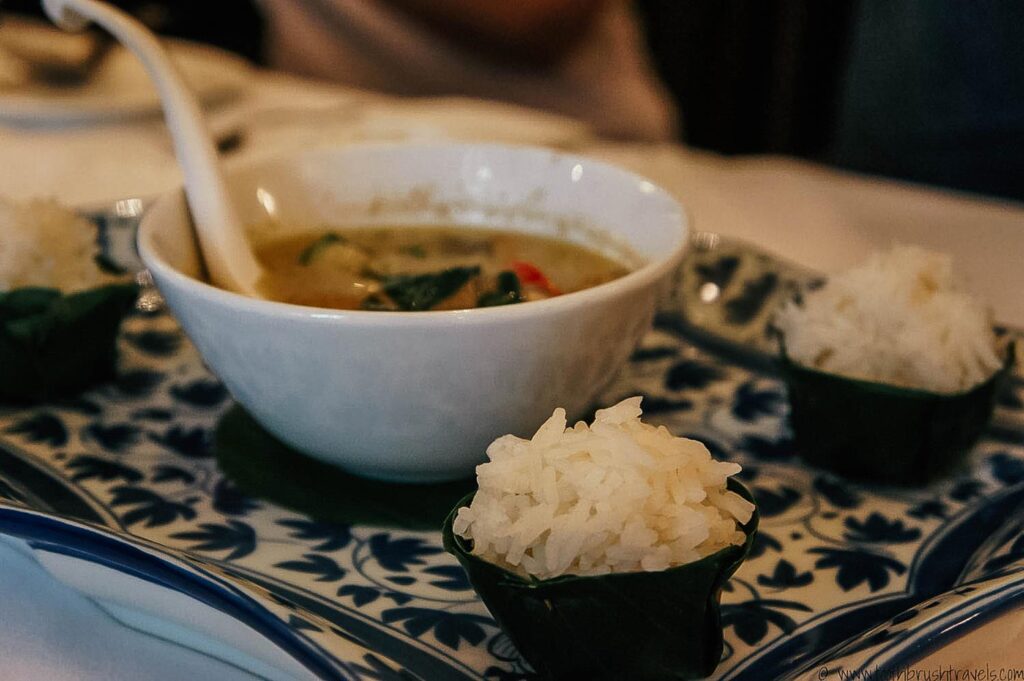
Situated on 10 Pramaun Street in Silom (between soi 17 and 19), this restaurant opened 20 years ago (but has been in Silom for just three) and was named in honour of Princess Sulabh-Valleng. Once upon a time, she was the head chef in the Sukothai Palace kitchen for her half-sister, Queen Rambhai Barni.
Whilst many claim to, this restaurant is one of the few places that genuinely specialises in royal Thai cuisine. Royal Thai food doesn’t differ much from other Thai food, the flavours are more equally balanced and the process of preparation and cooking is much more refined (and time-consuming!)
Fruits are peeled, seeded and carved and never served whole if their size is too big. All meat and fish are deboned—with fish fillets being cooked, deboned and then placed back together (with the head!) to give the appearance of a whole fish. The transformation from ingredients to a finalised meal is a lengthy process and presentation is everything.
We tried three dishes, a rice ‘cake’ topped with meat and coriander, kaeng khiao wan gai (green curry) with steamed rice, and a ginger sorbet, which was so decadently creamy you would have thought that it was made with milk and not water! The flavours were intense and incredibly well balanced, however, I was a little disappointed in the green curry as I love the flavour (and challenge!) that comes from a spicy curry.
And with that, the taste of Thailand food tour was over.

The tour was informative and fun, and I loved how much effort Pu and Jacob have put into working in partnership with locals—working to help preserve their way of life instead of exploiting it. It wasn’t a show for tourists but rather a glimpse into somebody else’s life. It feels authentic and Jacob and Pu introduced me to a wealth of knowledge about food, and the story that comes with it.
After all, food isn’t just a meal. It’s history, culture and years of evolution all in one spoonful. If you fancy your own taste of Thailand, you can book a tour with them here.
